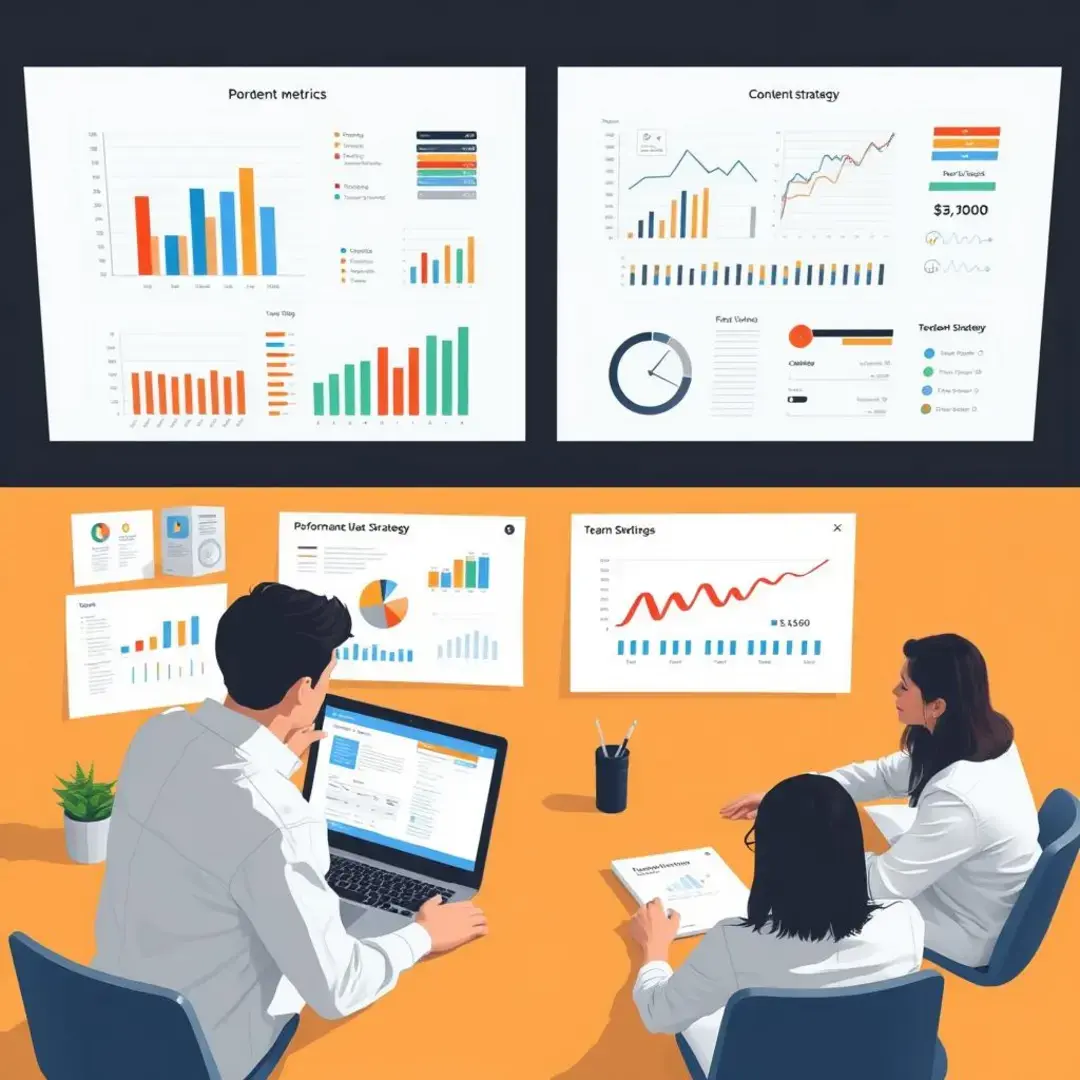Taking Your Content to the Next Level: Expert Insights and Ideas
Advanced content creation strategies

Optimizing content for specific platforms
LinkedIn is a professional network that thrives on industry insights and thought leadership. When crafting content for this platform, it’s essential to adopt a more formal tone and focus on in-depth analyses. Incorporating rich media, such as infographics and videos, can help grab attention and convey complex information effectively. Additionally, ensure your content aligns with trending topics relevant to your audience. Networking within LinkedIn groups can also amplify reach and engagement.
Twitter is a fast-paced platform that requires concise and impactful messaging. By breaking content into digestible threads, users can engage more interactively without feeling overwhelmed. It’s crucial to start with a compelling hook to capture interest immediately, followed by clear, value-driven points in subsequent tweets. Use relevant hashtags to broaden your audience reach, and consider including multimedia elements like images or GIFs to enhance visual appeal.
Instagram is all about visuals, making it critical to focus on high-quality images and compelling captions. Users are drawn to authentic stories and aesthetic content; hence, leveraging features like Stories, Reels, and IGTV can diversify your strategy. Consider incorporating interactive elements such as polls, quizzes, and user-generated content to foster community engagement. Creating a consistent theme or aesthetic can also increase brand recognition.
Leveraging data and analytics
Google Analytics is a powerful tool that enables content creators to track user behavior and optimize accordingly. By examining specific metrics such as page views, bounce rates, and average session duration, you can gain insights into what content resonates most with your audience. Regularly monitoring these metrics allows for timely adjustments to your strategy, ensuring that you maintain or improve your engagement levels.
Engagement metrics are vital for determining the effectiveness of your content. Metrics such as time spent on page, social shares, and comments provide a clear picture of audience interest. Analyzing these trends helps identify which topics spark conversation and which may require reevaluation. Based on this data, content adjustments can be made to enhance user experience, thereby boosting engagement over time.
A/B testing, or split testing, is a method used to compare two versions of content to determine which one performs better. By tweaking specific elements such as headlines, images, or calls to action, you can collect data that points to your audience’s preferences. This practice not only guides future content creation but also optimizes existing posts for higher conversions. Remember to test only one variable at a time for accurate results.
Implementing advanced SEO techniques
Schema markup is a type of microdata that helps search engines understand your website content better, leading to enhanced search visibility. By implementing schema markup, your content can appear as rich snippets in search results, increasing click-through rates. This technique is particularly effective for blogs, product pages, and event announcements. Investing time into learning about and applying schema can yield significant long-term benefits in SEO.
With the rise of voice-activated devices, optimizing your content for voice search is becoming increasingly important. This involves targeting conversational keywords and structuring content to answer questions directly. Utilizing a FAQ format can enhance your chances of being featured in voice search results, thus driving more traffic to your site. As consumer behavior continues to evolve, adapting your strategy for voice search is crucial for staying competitive.
Effective keyword research is the backbone of any content strategy. Tools like SEMrush, Ahrefs, and Moz provide deep insights into search volume and competition, enabling you to target the most effective keywords. Additionally, exploring long-tail keywords can help connect with niche audiences who are more likely to convert. Consistent keyword analysis ensures your content remains relevant and aligned with search engine algorithms.
Content promotion and distribution tactics

Building a strong online presence
Building a personal brand goes beyond just creating content; it requires establishing a clear identity and voice in your niche. By sharing knowledge and experiences, you can create a strong connection with your audience. Engage continuously and authentically with your followers, inviting feedback and interaction. Consistency in quality and frequency will help reinforce your brand over time.
Collaborating with influencers can significantly amplify your content’s reach. By tapping into established audiences, you can garner attention and credibility within your niche. Building genuine relationships with influencers involves more than just a transactional approach; mutual benefit creates long-lasting partnerships. Consider co-creating content, hosting webinars, or participating in joint events to foster deeper connections.
Active participation in online communities related to your niche is a strategic way to promote your content. By contributing valuable insights in forums, discussion boards, or social media groups, you can establish authority and build relationships organically. Avoid overt self-promotion; instead, focus on providing value and answering questions. In doing so, you’ll naturally draw attention back to your content.
Utilizing paid advertising strategies
Facebook ads provide a robust platform for targeting specific demographics and interests, allowing businesses to reach their desired audience effectively. By creating compelling ad copy and visuals, you can drive traffic to your content, increasing visibility. Utilize A/B testing within your campaigns to identify high-performing ads, adjusting your strategy based on performance metrics for continued improvement.
LinkedIn offers various advertising formats tailored specifically for B2B marketing. By leveraging sponsored content, InMail ads, and targeted display ads, you can effectively reach decision-makers in your industry. Understanding your target audience and customizing messages accordingly will increase your ad effectiveness. Regularly monitor campaign performance and adjust targeting parameters as needed.
Google Ads can be a powerful way to enhance the reach of your content across search results and partnered websites. By carefully selecting keywords and crafting enticing ad copy, you can draw in a relevant audience. Consider creating specific landing pages tailored to your ads to improve conversion rates. Continuously refining your ad campaigns based on data leads to sustained growth and visibility.
Harnessing the power of email marketing
An email list is one of the most valuable assets for any content creator. By collecting email addresses through lead magnets, such as eBooks or exclusive content, you can foster direct communication with your audience. Regularly reaching out to your subscribers helps maintain engagement, providing them with curated content that adds value. Building trust over time encourages loyalty and increases the chances of conversions.
Your email newsletter is the perfect opportunity to showcase your content and connect with your audience. An effective newsletter should include a mix of valuable content, promotional material, and personal anecdotes to maintain interest. Segmenting your audience allows for personalized messaging, increasing relevance and engagement. Experimenting with different formats can also help identify what resonates best with your readers.
Audience segmentation involves dividing your email list into smaller groups based on shared characteristics. This allows you to tailor your messaging to meet the unique needs of different segments. For example, you might have segments for new subscribers, active readers, and past customers. Personalization enhances user experience, increasing the likelihood of engagement and conversion as your content becomes more relevant to each recipient.
Measuring and analyzing content performance

Key performance indicators (KPIs) for content marketing
Understanding how your content drives traffic and conversions is critical for evaluating its effectiveness. Use Google Analytics to monitor visitor numbers on key pages, alongside conversion rates that indicate how well your content meets goals. This insight not only helps refine your content strategy but also informs adjustments to user experience on your website. Analyzing these patterns enables you to make informed, data-driven decisions moving forward.
Social media engagement is a vital indicator of content performance. Metrics such as likes, shares, and comments can offer insight into how well your content resonates with audiences. Regularly reviewing these statistics helps identify trends that can inform future content creation. Actively engaging with your audience and encouraging discussion can further nurture an active online community around your brand.
Measuring the return on investment (ROI) of your content is essential for justifying your marketing efforts. By calculating the revenue generated as a direct result of your content initiatives, you can track effectiveness over time. Consider both tangible outcomes, such as sales, and intangible benefits, such as increased brand awareness or lead generation. Regular assessments of content ROI ensure resources are allocated strategically for maximum impact.
Using analytics tools to gain insights
Advanced Google Analytics features allow deeper insights into user behavior beyond basic metrics. Utilizing features like funnels, goals, and event tracking can reveal how users interact with your content. This information helps identify strengths and weaknesses within your user journey, making it easier to fine-tune your website’s layout and content strategy. Consistently leveraging these insights leads to improved user experiences and higher engagement rates.
Social media analytics tools provide invaluable insights into audience demographics, engagement patterns, and content performance. Platforms such as Hootsuite, Buffer, and Sprout Social allow you to monitor multiple channels in one place, streamlining analysis. Regularly assessing this data can inform posts, best times for sharing, and content formats that drive engagement. This intelligent analysis cultivates a more targeted and effective social media strategy.
Marketing automation tools play a crucial role in streamlining your content marketing efforts. By automating repetitive tasks such as social media posting, email campaigns, and lead nurturing, you can focus on content creation and strategy. This software can also help track audience interaction, sending timely and relevant content based on user behavior. Ultimately, automation enhances efficiency and allows for more personalized audience engagement.
Adapting your content strategy based on data
Regularly reviewing content performance analytics is essential for identifying what works and what doesn’t. Analyzing metrics such as engagement rates, shares, and conversion rates can help you pinpoint high-performing content that resonates with your audience. This information enables you to replicate success in future campaigns while adjusting or discontinuing underperforming content. A thorough understanding of what drives success guides your overall content strategy.
Audience behavior analysis provides insights into how users interact with different types of content. By studying the ways users navigate your site, engage with posts, or react to specific topics, you can create targeted content that meets their needs. Regularly assess these patterns through heatmaps, session recordings, or user surveys to gather feedback. This data helps anticipate audience expectations and tailor future content accordingly.
Refining your content strategy involves continuously evaluating performance metrics and audience feedback. By being flexible and willing to adapt, you create a more effective content approach that aligns with evolving trends and user preferences. Engage in regular strategy reviews, and don’t hesitate to pivot when necessary to embrace fresh ideas and techniques. The end goal is to consistently deliver value while enhancing overall performance and engagement.






